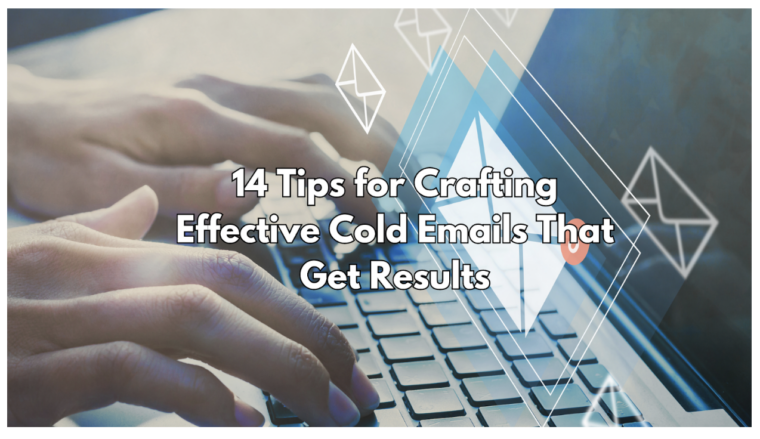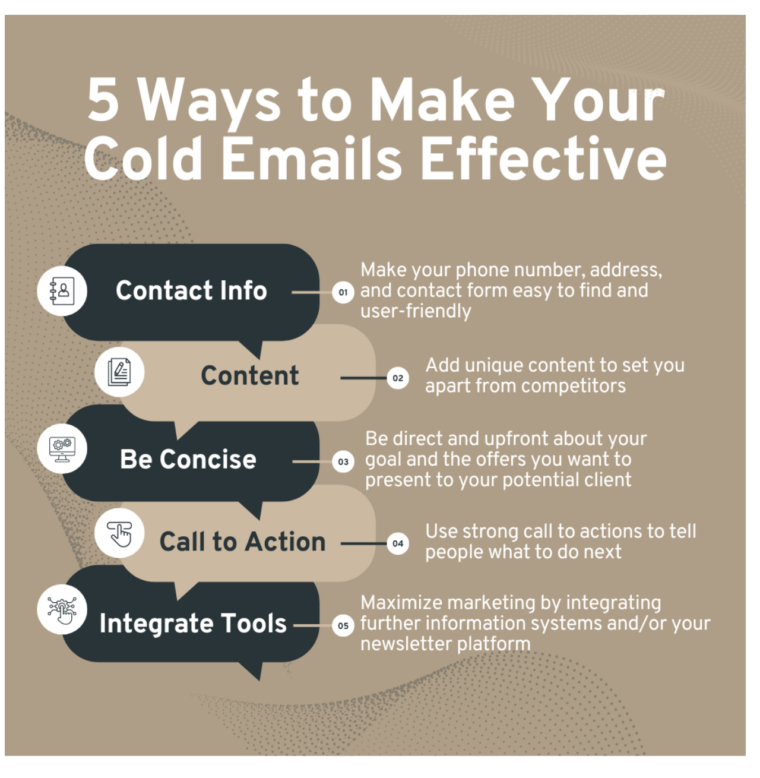14 Tips for Crafting Effective Cold Emails That Get Results

Cold emails ensure that businesses can reach out to potential clients, partners, or prospects who might not even be aware that such services exist. Realistically, not every cold email will capture attention or provoke a response. To ensure your outreach is effective, you need to craft emails that are compelling, targeted, and value-driven.
Whether you’re trying to close a sale, build new partnerships, or introduce a product, the structure and content of your cold email can make all the difference in determining its success. Below are actionable ways to write cold emails that stand out in inboxes full of clutter and garner positive results.
Crafting Your Message
In cold emails, every word should be meaningful. From the subject line to the signature, one needs a balance between capturing attention and making sure not to overwhelm the reader. The best cold email software may make it easy and automated to send and track your outreach, but the content of the message still needs to make sense to your audience.
1. Attractive Subject Line
The subject line must be one that will successfully compel your recipient to open your email. Off-limits are generic subject lines like “Quick Question” or “Following Up.” Instead, customize attention-grabbing lines that show a reason or possible benefit for opening the email. Keep it short and use powerful words that evoke curiosity or create value.
2. Personalize Your Email
People will always respond more to emails that have relevance to them, therefore, take your time to personalize your message. Mention something specific related to their company, a mutual connection, or an achievement of late. Personalization proves that you’ve done your homework, and it’s not some mass-blast email. It just makes your email more human and less like a cold impersonal solicitation.
3. Keep the Email Concise
With people barely having any time to spare nowadays, none of them will go through the pain of reading a very long email. Be direct to the point and deliver your message in as brief and clear a manner as possible. Your email should be complete within 50-125 words in length. Just give them enough to get them interested and not explain it all at once. You can explain further once you have the attention of the recipient.
4. Offer Value Upfront
Your email has to offer some value to the person it’s addressed to. Whether this is a solution to a problem, insight, or any particular form of growing experience, make sure what you offer is crystal clear. Give them a benefit in the first few sentences for having a reason to read on. Rather than thinking about what you need from them, focus on what you can do for them, and this will automatically raise your chances of hearing something positive back.
5. Include a Strong Call to Action
Your purpose must be in crystal clear vision. Conclude your email with a binding CTA requesting a meeting, response, or call setup. Steer away from vague requests like “Let me know what you think,” and instead say straight out, “Are you available for a 10-minute call on Thursday?” This kind of CTA clearly defines the next step for the receiver.

6. Timing and Structure
Structure and timing may make all the difference in your Cold email to potential clients, just as important as the content. A well-timed and well-structured email will mirror your professionalism and respect for the recipient’s time.
7. Send at the Right Time
Timing is everything in cold emails. It has been researched that emails generally get a better response rate if they are sent on a Tuesday or Thursday morning. You stand a better chance of having your email read by sending it at a time when people would most probably check their inboxes-that is, mid-morning or early afternoon.
8. Optimization of Email Layout
The message should be visually appealing and readable. Ensure that the email is easy to scan by keeping the paragraphs short, using bullet points where applicable, and using white space. This way, even if an individual doesn’t read every word, he/she will get your message in a short time.
9. Conversational Tone
Formal emails can sometimes sound cold and standoffish. Instead, strike up a conversational tone that is invitingly warm and friendly. Write as if you sat down and chatted with a colleague, not to impress your colleague with some corporate jargon. A casual yet professional tone can make your email feel a little less intrusive and more inviting.
10. Proofread Before Sending
Not even the best cold email software will save you from the aftermath a typo or grammatical mistake can cause. Before hitting send, proofread your email for errors. Better yet, read it out loud to catch awkward phrasing or any inconsistencies in tone.
11. Follow-up and Engagement
Where cold emailing is incredibly powerful is in the follow-up. Rarely will you get a response after one email, be prepared to send follow-ups that keep interest going and push the conversation along.
12. Have a Follow-Up Strategy
Once in a rare while, one will suffice. People are busy, and sometimes they might just happen to miss your opening salvo. To this principle, follow-ups form an intrinsic part of the success of cold emailing. Send a follow-up mail after 3 to 5 days from your opening email to remind them about your offer and nudge them politely for a response.
13. Provide New Value in Follow-Ups
The follow-up emails should always provide something new. Sometimes it could be more information, a case study, or even examples of how your service helped others. Whatever that might be, at every touch-point, you have to add fresh value. That way, your emails will not come across as repetitive, and the recipient will have a reason to engage with you.
14. Track Engagement
So, many cold email outreach software allows you to track open rates, clicks, and responses. Keep track of those things because that can be an indication of what works and what doesn’t. If the recipients are opening your emails, yet not replying to them, it might be time for a different message or CTA.
Frequently Asked Questions
- How long should a cold email be?
A cold email should be short and to the point, say around 50-125 words. Hacking it down respects the receiver’s time and provides more potential for a response.
- How often should I follow up on a cold email?
Following up in 3 to 5 days from the initial email is generally a good rule of thumb. If necessary, you can send a second follow-up in 7 to 10 days from the first one.
- What is the perfect time to send cold emails?
Mid-morning or early afternoon on Tuesday or Thursday is usually the best time because this tendency will be perfect for when most professionals are checking their inboxes.
Conclusion
It’s all about balancing personalization and value with strategy in cold email writing. Pay more attention to the needs of your recipient, and let the well-structured message bring in a higher success rate.
